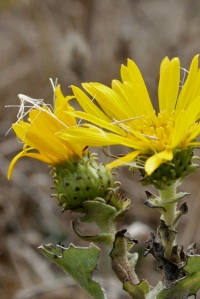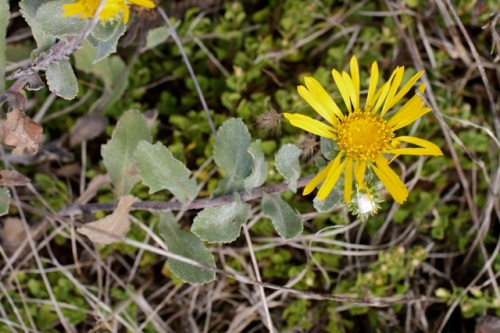Scrappy and graceful, the pepperwood (Umbellularia californica, or California bay laurel) is often overlooked and underappreciated, but it’s one of my favorite trees. It can take on all sorts of forms, from skinny trunks packed close together in the understory to stoic ancient giants. Near the coast they can become windswept, so an entire stand of trees melds together into a single undulating canopy of green. They host many other species–from birds and beetles to the moss and ferns that grow on their trunks. Pepperwood often are full of cavities where critters roost or nest, and if you climb them often–as I did as a kid–you quickly learn to check the crooks of the branches for racoon scat.
This slideshow requires JavaScript.
Right now the nuts of the pepperwood are beginning to ripen; inch-long orbs of green or purple or yellow peek out from among the leaves. In the early winter, tiny pale yellow flowers will begin to bloom. They are easy to miss, but worth looking for: each tiny blossom is an intricate display (see the photos above). I particularly love the decorative dots of pollen arranged on spatula-shaped stamens. The leaves are wonderful too, both to look at and eat: the distinctive peppery aroma adds a nice flavor to beans or tomato sauce.
Recently pepperwood has gotten a bad rap because it’s a vector for sudden oak death but doesn’t die from it. Some people advocate cutting down pepperwoods to protect their oaks. Perhaps this method might slow the spread of the disease–but it won’t stop it. Personally I’d rather keep the mature pepperwoods around then have to start a forest over from scratch.
I should note that pepperwood is the less-used name for this tree; but personally I think it’s much better than the staid and unevocative bay laurel. I also like the heritage of the word–it’s what my grandfather always called it, and those who use it nowadays tend to be old-time Californians. A tribe I’m happy to be in.
 If it looks like a saxifrage and it grows like a saxifrage, then it’s a saxifrage… right? Well, no. Not in the case of mist maidens (Romanzoffia californica). The delicate spray of white flowers rises on long bare stalks from a rosette of scalloped leaves… which is the characteristic growth pattern of the Saxifragaceae. But this little moisture-loving plant is actually in the Boraginaceae family, along with forget-me-nots and fiddlenecks.
If it looks like a saxifrage and it grows like a saxifrage, then it’s a saxifrage… right? Well, no. Not in the case of mist maidens (Romanzoffia californica). The delicate spray of white flowers rises on long bare stalks from a rosette of scalloped leaves… which is the characteristic growth pattern of the Saxifragaceae. But this little moisture-loving plant is actually in the Boraginaceae family, along with forget-me-nots and fiddlenecks.















